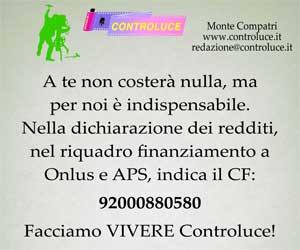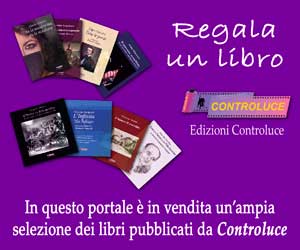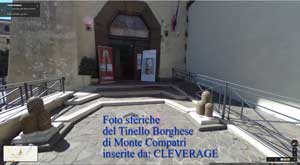Fondazione Carriero – Sol LeWitt Between the Lines

Fondazione Carriero
Sol LeWitt
Between the Lines
A cura di Francesco Stocchi e Rem Koolhaas
venerdì 17 novembre 2017 – sabato 23 giugno 2018
aperto tutti i giorni con accesso libero dalle 11:00 alle 18:00 (chiuso domenica)
CONFERENZA STAMPA
mercoledì 15 novembre 2017, ore 12.00
Palazzo Visconti
via Cino del Duca 8, Milano
RSVP: press@larafacco.com
Interverranno: Francesco Stocchi e Rem Koolhaas, curatori della mostra e Sofia LeWitt, figlia dell’artista.
OPENING
giovedì 16 novembre 2017, ore 17.00
Fondazione Carriero
via Cino del Duca 4, Milano
L’accesso all’opening è consentito solo previa prenotazione, indicando la fascia oraria di preferenza: 17.00-18.00 / 18.00-19.00 / 19.00-20.00 / 20.00-21.00
email: opening@fondazionecarriero.org | tel: +39 02 36 747 039
Dal 17 novembre 2017 al 23 giugno 2018 la Fondazione Carriero è lieta di presentare Sol LeWitt. Between the Lines, una mostra a cura di Francesco Stocchi e Rem Koolhaas organizzata in stretta collaborazione con l’Estate of Sol LeWitt.
Nel decennale della scomparsa di Sol LeWitt (Hartford, 1928 – New York, 2007), Between the Lines intende offrire un punto di vista nuovo sulla pratica dell’artista statunitense, esplorandone i confini – nel rispetto di quelle norme e di quei principi alla base del suo pensiero – e isolando i momenti fondanti del suo metodo di indagine e dei processi che ne derivano. Attraverso un nutrito corpus di opere che ripercorrono l’intero arco della sua carriera – dai celeberrimi Wall Drawings alle sculture come Complex Form e Inverted Spiraling Tower, fino alla serie fotografica Autobiography 1980 –, e partendo dalla peculiarità degli spazi della Fondazione, il progetto espositivo esplora la relazione del lavoro di LeWitt con l’architettura.
Between the Lines si basa su una chiave di lettura forte e innovativa, tesa innanzitutto a riformulare l’idea che sia l’opera a doversi adattare all’architettura, fino ad arrivare a sovvertire il concetto stesso di site¬-specific. Con la collaborazione dell’architetto Rem Koolhaas – per la prima volta nella veste di curatore – in dialogo con il curatore Francesco Stocchi, Between the Lines affronta ampi aspetti dell’opera di LeWitt, con l’obiettivo ambizioso di superare quella frattura che tradizionalmente separa l’architettura dalla storia dell’arte e che caratterizza l’intera pratica dell’artista, rivolta più al processo che al prodotto finale, e scevra di qualsiasi giudizio estetico o idealista.
Nel 1967 LeWitt pubblica sulla rivista Artforum il testo “Paragraphs on Conceptual Art” – considerato tutt’oggi basilare per la comprensione dell’arte concettuale – che sancisce il primato dell’idea sull’esecuzione, attribuendo così maggior rilievo al concetto e al processo rispetto all’oggetto, segnando l’inizio della progressiva riduzione al grado primordiale dell’opera d’arte. Nel testo LeWitt conia il termine “concettuale”, aprendo la strada a un’idea di arte e a un modo di lavorare che sarà – e continua a essere – rilevante per le successive generazioni di artisti. Il compito dell’artista è dunque quello di formulare il progetto, la sua esecuzione invece può essere affidata a chiunque, purché si rispettino le istruzioni stabilite. Il suo credere nell’artista come generatore di idee ha aggiunto una nuova dimensione al suo ruolo, avvicinandola alla figura di un architetto che crea un progetto per un edificio e poi delega la produzione effettiva ad altri.
Tuttavia, il teorema che LeWitt professava è più ampio di quanto s’immagini: è quel certo, misurato, grado di casualità determinato dall’individualità dell’esecutore ad aprire l’opera al pathos della creazione artistica, al senso determinato dalla coerenza interna del sistema linguistico, e dunque dal metodo e non dall’esito di per sé. Muoversi liberi all’interno di regole. Quando ad esempio, in memoria dell’amica Eva Hesse, l’artista introduce nei suoi Wall Drawings “le linee non dritte”, si abbandona alla comprensione (e all’interpretazione) dell’esecutore, rafforzando ulteriormente il disinteresse per ogni forma di estetica a favore dell’attenzione per la regola, rendendo così le sue opere immortali perché capaci di rinnovarsi ogni volta.
È a questo punto che si inserisce il ruolo dell’architettura (e dell’architetto) nella valutazione dell’opera di LeWitt, non solo per l’affinità nella progettualità delle idee, ma per la capacità che entrambi hanno di rimodellare lo spazio. Le opere di Sol LeWitt non possono essere considerate sculture, né opere pittoriche e neanche strutture architettoniche, si tratta piuttosto di Structures forme inserite nello spazio, a metà tra la bidimensionalità e la tridimensionalità. La loro regolarità geometrica le rende “basi” perfette per i suoi disegni a parete, moltiplicabili, trasformabili in pattern e replicabili in un numero infinito di forme bianche, nere, o colorate, solide o aperte. Sono forme che rivelano il loro attaccamento all’immagine piatta ma al tempo stesso sfidano la gravità, innescando una riflessione che unisce dipinti a parete e sculture, creando una porta d’accesso tra “dimensionalità” e “costruzione”. Molte di queste forme sono incuranti dell’ambiente e delle sue caratteristiche, attraversano porte e pareti in continuità con l’architettura senza essere condizionate dalla specificità del luogo in cui si sviluppano, ripercorrendo in questo modo l’intera storia della pittura murale. L’opera si permea di quel luogo ma non è necessariamente pensata per esso, e in questo modo rivela un nuovo spazio metafisico fatto non di linee, cubi o altre forme geometriche, bensì dell’idea di quelle stesse linee, cubi o forme.
La mostra alla Fondazione Carriero nasce dunque dal desiderio di esplorare i confini dell’opera di LeWitt, considerando i suoi postulati all’interno di un nuovo e più libero sistema di verifica, e di proporre una nuova armonia tra figura tridimensionale e superficie bidimensionale.
Between the Lines si inserisce coerentemente nel percorso iniziato dalla Fondazione Carriero con imaginarii (settembre 2015), FONTANA • LEONCILLO Forma della materia (aprile 2016), FASI LUNARI (ottobre 2016) e PASCALI SCIAMANO (marzo 2017), mostre curate da Francesco Stocchi il cui punto cardine è l’approccio dialogico e la tensione costante verso ricerca e sperimentazione.
La mostra è resa possibile grazie alla stretta collaborazione con l’Estate of Sol LeWitt e a prestiti provenienti da prestigiose istituzioni pubbliche, come il Whitney Museum of American Art (New York), e importanti collezioni private, come la Collezione Panza.
I Wall Drawings esposti negli spazi della Fondazione Carriero sono eseguiti con la collaborazione di giovani artisti e studenti milanesi, sotto la fondamentale supervisione della Estate Sol LeWitt.
La mostra è accompagnata da un catalogo (italiano e inglese) edito da Fondazione Carriero, curato da Francesco Stocchi, che raccoglie le immagini delle opere allestite in Fondazione, con contributi dei curatori Francesco Stocchi e Rem Koolhaas, un saggio scritto per l’occasione dall’architetto e storica dell’arte Adachiara Zevi e una biografia inedita, illustrata con immagini personali e d’archivio, molte delle quali mai pubblicate prima, curata per l’occasione da Sofia LeWitt, figlia dell’artista.
Fondazione Carriero
Sol LeWitt
Between the Lines
curated by Francesco Stocchi and Rem Koolhaas
Friday, November 17, 2017 – Saturday, June 23, 2018
open every day with free admission 11 am to 6 pm (closed Sundays)
PRESS CONFERENCE
Wednesday, November 15, 2017, at 12 pm
Palazzo Visconti
via Cino del Duca 8, Milan
RSVP: press@larafacco.com
Speakers: Francesco Stocchi and Rem Koolhaas, curators of the exhibition and Sofia LeWitt, the artist’s daughter.
OPENING
Thursday, November 16, 2017, 5 pm
Fondazione Carriero
via Cino del Duca 4, Milan
Access to the opening will be allowed only by booking, giving the time slot of preference: 5-6 / 6-7 / 7-8 / 8-9 pm
email: opening@fondazionecarriero.org | tel: +39 02 36 747 039
From November 17, 2017 to June 23, 2018 the Fondazione Carriero is pleased to present Sol LeWitt. Between the Lines, an exhibition curated by Francesco Stocchi and Rem Koolhaas and organized in close partnership with the Estate of Sol LeWitt.
One decade after the death of Sol LeWitt (Hartford, 1928 – New York, 2007), Between the Lines aims to offer a new perspective on the American artist’s practice, exploring its confines—though always adhering to the underlying norms and principles of his ideas—and singling-out the most interesting moments of the method of investigation and the processes that may arise. With a considerable body of work spanning his entire career—from the famous Wall Drawings to sculptures like Complex Form and Inverted Spiraling Tower, up to the photo series Autobiography 1980—and starting from the peculiarities of the rooms at the Foundation, the exhibition explores the relationship between LeWitt’s work and architecture.
Between the Lines is based on a powerful and innovative key to interpretation, aimed above all at reformulating the idea that a work must adapt to the architecture, thereby challenging the very notion of site-specificity. With the collaboration by the architect Rem Koolhaas—as a curator, for the first time ever—in dialogue with the curator Francesco Stocchi, Between the Lines faces broad aspects of LeWitt’s oeuvre, with the ambitious goal of moving beyond the division that traditionally separates architecture and art history and which characterizes the artist’s entire body of work, aimed more at the process than at the final result, free from any aesthetic or idealist opinion.
In 1967, LeWitt published in the magazine Artforum his “Paragraphs on Conceptual Art”—considered, even today, fundamental to understanding conceptual art—decreeing the importance of the idea over the execution, thus attributing more relevance to the notion, to the process rather than to the object and, therefore, marking the beginning of a gradual reduction of the artwork to an elementary state. In this text, LeWitt coins the term “conceptual,” paving the way for an idea of art and a way of working that was—and still is—important for generations of artists. The artist’s task is to formulate the project, whereas its execution can be entrusted to anyone, provided the instructions be respected. His belief in the artist as the creator of ideas adds a new dimension to his role, likening it to the figure of an architect who creates a design for a building and then entrusts its construction to others.
Yet, the theory LeWitt professed is vaster than imagined: it is the certain, measured degree of randomness established by the individuality of the one who will execute the work to expose it to the pathos of artistic creation, to the sense determined by the inner coherence of the linguistic system and, therefore, by the method and not the result per se. Moving freely within the rules. Like when, for example, in commemoration of his friend Eva Hesse, the artist introduces “non-straight lines” in his Wall Drawings and abandons himself to the understanding (and the interpretation) of the one who executes, further reinforcing a disinterest for any form of aesthetics in favor of respect for rules, thus making his works immortal since they can renew themselves each time.
At this point the role of architecture (and of the architect) becomes part of assessing LeWitt’s work, not only for the affinity in planning ideas but for the ability both have to reshape space. Sol LeWitt’s works cannot be considered sculptures or paintings or even architectural structures. Instead, they are Structures, forms inserted into the space, taking shape midway between the two-dimensional and the three-dimensional. Their geometric regularity makes them perfect “bases” for his wall drawings—multiplied, transformable into patterns, and repeatable in an infinite number of white, black, or colored shapes, either solid or open. These forms reveal their loyalty to flat images while at the same time they challenge gravity, triggering a reflection that joins wall paintings and sculptures, thereby creating an access between “dimensionality” and “construction.” Many of these figures are oblivious to their surroundings and their features; they cross doors and walls, thus creating continuity in the architecture without being conditioned by the specificity of the place in which they develop. Therefore, they cover the entire history of wall painting. The work is imbued with that location, though it wasn’t necessarily conceived for it, and, thus, it reveals a new metaphysical space made not with lines, cubes, or other geometric shapes, but with the idea of those very lines, cubes, and shapes.
The exhibition at the Fondazione Carriero stems from the desire to explore the confines of LeWitt’s work, considering his postulates as part of a new and freer system of verification, and to propose new harmony between the three-dimensional figure and the two-dimensional surface.
Between the Lines is an integral part of the program begun by the Fondazione Carriero with imaginarii (September 2015), FONTANA • LEONCILLO Forma della materia (April 2016), FASI LUNARI (October 2016), and PASCALI SCIAMANO (March 2017), exhibitions curated by Francesco Stocchi whose focus is their exchange approach and constant strive for research and experimentation.
The exhibition is made possible thanks to a close collaboration with the Estate of Sol LeWitt and to loans from prestigious public institutions, like the Whitney Museum of American Art (New York), as well as important private collections, like the Collezione Panza.
The Wall Drawings on display at the Fondazione Carriero were executed in collaboration with young artists and students in Milan, under the close supervision of the Estate of Sol LeWitt.
The show will be accompanied by a catalogue (Italian/English), published by the Fondazione Carriero and edited by Francesco Stocchi, which gathers images of the works installed at the Foundation, with contributions by the curators Francesco Stocchi and Rem Koolhaas, a scholarly text written for the occasion by the architect and art historian Adachiara Zevi, and a previously unpublished biography, illustrated with personal and archive images, many of which have never been seen before and compiled for the publication by Sofia LeWitt, the artist’s daughter.
PRESS CONTACTS
Lara Facco P&C
Viale Gian Galeazzo 25 | 20136 Milan
press@larafacco.com
Lara Facco E. lara@larafacco.com
INFO
Fondazione Carriero
via Cino del Duca 4 | 20122 Milan
info@fondazionecarriero.org
www.fondazionecarriero.org




















































































































































































Non ci sono commenti, vuoi farlo tu?
Scrivi un commento